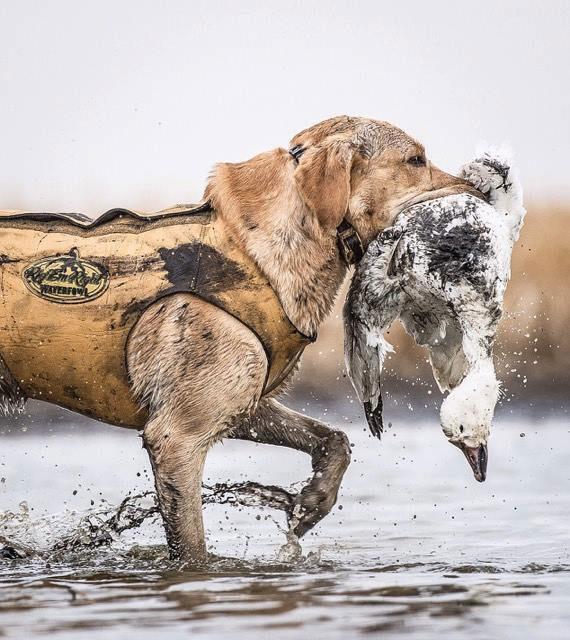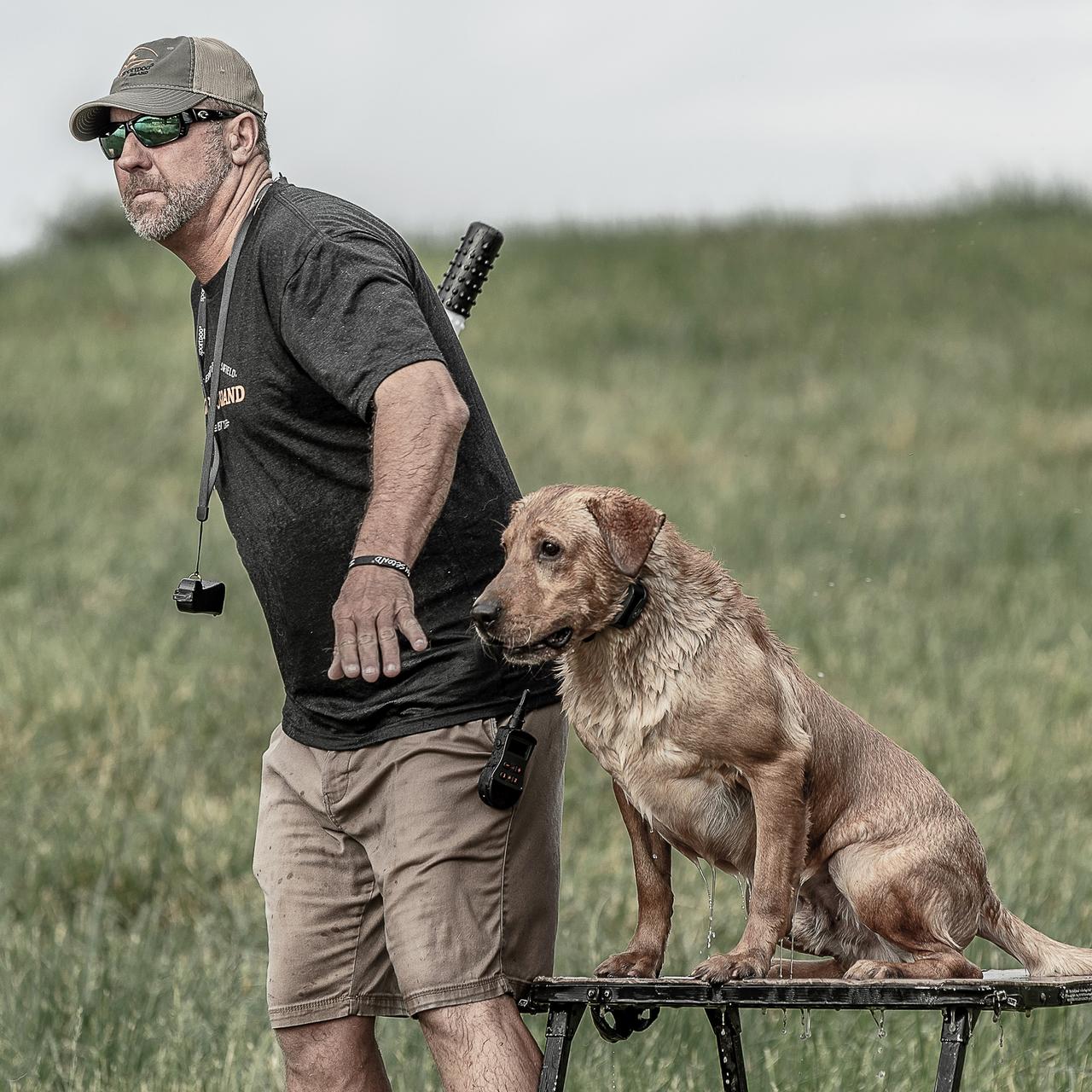
6 Keys for a Better Snow Goose Hunt with Your Retriever
Posted by Chris AkinSnow goose hunting brings its own, unique set of thrills in the world of waterfowling. Spring seasons, liberal or no bag limits, the use of electronic callers and unplugged shotguns add up to a wild time when you�’re lucky enough to find countless thousands of birds in your hunting area.
Not only is this an exciting type of hunting unlike any other, it’s also probably different than anything your retriever has experienced. Whether you’re a seasoned snow goose hunter or learning the ropes, here are some thoughts on how to make sure it’s a good experience for both you and your dog. Pay attention to these six items before you head to the field.
Make sure your dog is prepared for high-volume gunfire. In snow goose hunting, you’re probably going to be out there with six, eight, maybe even a dozen gunners with unplugged shotguns. If your dog isn’t ready for that, it’s a recipe for disaster. Make sure you’ve exposed your dog to some group hunts with lots of people shooting at once.
If there was ever a time when your dog might break, this is it.There’s so much excitement during a snow goose hunt. Everyone is using electronic callers now, so there’s a lot of racket. Then there are the geese themselves, which, especially on bluebird days, seem to take forever to drop into shooting range. There’s just a lot of anticipation being built up and then it carries on for an extended time. And finally, when everyone starts cutting loose on decoying birds, the temptation to break has reached its peak.
If you have a young dog, or a dog that for whatever reason you can’t fully trust to stay put, my advice is that you have a method to tie it out. You can use a screw-in ground stake to keep your retriever situated within the spread right where you want it, and then simply unclip the dog when it’s time to go to work.
Be smart about dog blind positioning. While it might make a lot of sense or even be necessary for a dog to be right next to you for some types of waterfowling, when it comes to snow goose hunting, carefully consider where you place your dog blind. With so much high-volume gunfire taking place, I believe the simplest way to protect your dog’s hearing is to position its blind at least 6 to 8 feet behind your own.
Keep the focus on retrieving manners. High-volume shooting, on a good day, means lots of geese on the ground that need retrieving. As a handler, you have to stay in control of the situation and not let your dog just start running around randomly picking up whichever birds it wants. Or worse, a dog might be returning with a bird and then see another bird flopping in the decoys and drop one bird to go after the second.
This is where all of your off-season obedience training and retrieving drills come into play. You wouldn’t let your dog get away with bad retrieving manners during training, and you shouldn’t let things slide while hunting, either. Don’t hesitate to go into training mode and make a correction when needed, even if it costs you a few minutes of hunting time.
Be prepared to hunt with multiple dogs. In my area of Arkansas, it’s not uncommon for an outfitter and his group of hunters to kill 100 to 200 birds in a day. Having multiple dogs out in the spread is pretty much a necessity. That means your dog isn’t going to get every retrieve. Again, manners are a must. Make sure you’ve worked on honoring other dogs during your pre-season training, and make sure you also enforce honoring when hunting in a group. Back to my previous point, if you anticipate problems in this area, be prepared to use a tie-out stake.
Long days require lots of energy. Most dogs are used to relatively short hunts. If most of your outings consist of short, morning duck hunts, an all-day snow goose hunt will be a huge change. If you’re having a good day and the birds are really piling into your decoys, there isn’t a lot of time to rest or take a nap. You’re probably wolfing down candy bars and drinking coffee or energy drinks. Consider that your dog is burning a lot of energy too. Bring plenty of water for your retriever, along with extra food, biscuits or other treats that you can give it throughout the day.
I guarantee that planning for the challenges that define snow goose hunting will pay big dividends when that first big snowstorm floats into your decoys, the guns start blazing and your dog gets to go to work.

Chris Akin
Jonesboro, AR
Chris has spent most of his life duck hunting or training in the field. Over the years, his program evolved into one of the most accomplished hunt test programs in the country. Webb Footed Kennels, Inc. has produced more than 350 Hunting Retriever Champions, 175 Master Hunters, and 35 Grand...
Related Products



